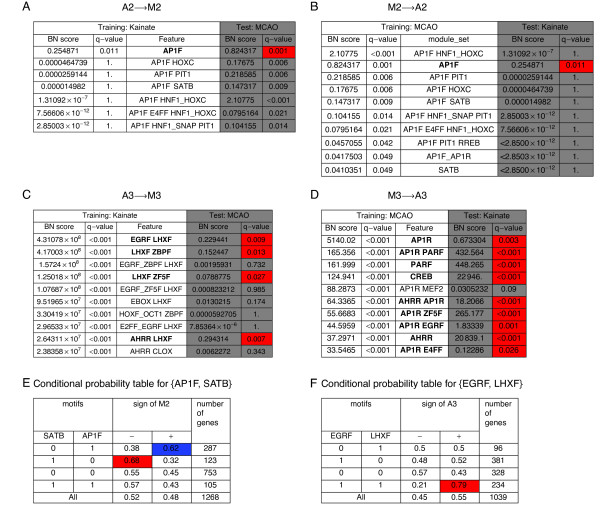Figure 5.
BN analysis of cis-regulation for the conserved eigensystems. The four tables (A-D) present the results of BN analysis of cis-regulation for the conserved second and third eigensystems from either dataset, followed by testing of highest-ranking features on the corresponding eigensystem from the other dataset. In each panel, the column Feature lists up to 10 nonempty sets of composite motifs with highest BN score and q-value < 0.05 on the indicated training dataset. Note that single motifs are included in the set of composite motifs. BN score of a composite motif set is the ratio of its posterior probability to the posterior probability of the empty set. The corresponding q-value derives from the permutational test. The shaded columns give the values of BN score and the corresponding q-value for the same feature computed on the other (test) dataset. Red color marks the cells with the test q-values < 0.05 for the features that also had training q-value < 0.05 and the descriptions of such features are given in bold. The q-values take into account the multiplicity of testing for each dataset separately, so it is possible to identify the features significant for one dataset only. (E, F) The conditional probability tables for the pairs of motifs: {AP1F, SATB} (E) and {EGRF, LHXF} (F).

